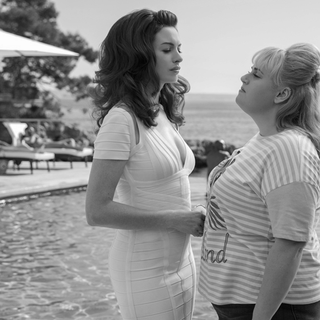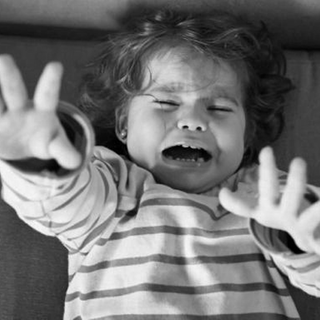
Tabloid Body Language Analysis Is Pretty Bogus
You can’t tell from body language whether a couple will break up.

Another day, another body language expert claiming to be able to decode the inner workings of a celebrity power couple. Body language expertise has been a mainstay of tabloids for years, but should it be? As a person with a highly expressive face, who often experiences at least five different emotions at once, and whose face doesn’t always match the prevailing or most rational emotion among them — I question it. Because I’m pretty sure body language analysis of any candid photo of me would conclude I’m ‘in a fight with her phone,’ ‘personally offended by her potted plant,’ ‘possibly allergic to her pants,’ and ‘one hot second from an insane asylum.’ And only two of those things are remotely true.
So, how reliable is body language analysis?
The short answer is: not very. Conclusions drawn from body language are highly questionable — especially if the subject isn’t well known to you.
Non-verbal communication is, of course, a well-documented phenomenon among humans. Research has discovered that humans across cultures and geographies display and understand a set of fairly universal facial expressions. The only thing is, most of us also learn from an early age to mask what we’re really feeling; whether from politeness, or from deceit. Facial expressions — a form of body language — aren’t the most accurate predictors of what’s really going on inside.
Related on The Swaddle:
Certain Facial Expressions May Universally Convey Sincerity, Intensity
This is why many body language experts talk about microexpressions — those fleeting, knee-jerk expressions that reveal unadulterated emotion in the split-second before our filters and masks kick in. But even these aren’t fully reliable; assuming we catch the microexpression (which we may not, given they last only 1/25 to 1/5 of a second), we may grasp the person’s emotion, but we’re left making assumptions as to its cause and the person’s specific thoughts based on our own interpretation of context. Which may lead us to place more weight on that microexpression (and underlying emotional response) than the person whose face is expressing it. Who among us hasn’t had a momentary flash of rage before taking a breath, and deciding to both feel and express a more measured response?
Which leaves us with the rest of the body. Research has shown that the brain sends signals to the body ahead of movement, even before a person consciously decides to move. Body language experts contend that a feeling — anger, perhaps, or hunger — is conveyed via the body first, before a person is conscious of it and can express (or repress) it with their face. Hence, the idea that the body can be read.
Even then, these physical cues are mere suggestions of what could be, rather than true insight; unlike a facial expression, a single physical stance can be indicative of a wide variety of inner cogitations. “For example, crossed arms falls under the category of negative body language and can suggest that a person is physically cold, closed off, or frustrated. It can even indicate that they’ve simply had too much to eat,” writes Adam Dachis in a 2011 Lifehacker article on reading body language, which goes on to recommend noting multiple body cues in order to distill the truth.
But even paying attention to multiple cues only goes so far — because given all of the variables involved, reading someone’s body language to any degree of accuracy is typically only possible if you know the person well. “You know already, unless you’re completely clueless, when your spouse is ticked off, or your child is bored, or your boss wants something done, now! With people we know, we’ve already amassed many hours of study, and we know the signs,” writes Nick Morgan, a communication theorist, in a 2012 article on body language myths for Forbes. “Of course, even the people that we know best can deceive us, but not usually for long and not on the important stuff.”
Which suggests that in the majority of casual interactions and observed situations — and certainly when viewing a photo of a couple snapped by a paparrazo hiding behind a bush — there’s no such thing as body language expertise. We can go with our gut; we can make broad assumptions based on what we already know — but we probably won’t be able to suss out any secrets. (Which is why, perhaps, so many body language experts are consulted after the fact, e.g. in post-break up retrospectives.)
If you’re not convinced, here’s a final nail in the coffin of body language expertise: the U.S. government agency responsible for securing its transport infrastructure, the TSA, spent US$ 1 billion training its agents in behavior detection — aka reading body language — only to conclude, after an evaluation of the initiative, alongside a large-scale analysis of 200 studies on the topic, that body language reading doesn’t work, the New York Times reported. “We propose that people judge others’ deceptions more harshly than their own and that this double standard in evaluating deceit can explain much of the accumulated literature,” the analysis concluded.
The ability to ferret out hidden truths using only our eyeballs is a powerful idea. But the biggest truth might be the one hiding in plain sight: body language expertise is questionable, at best; in the end, if you want to know the truth of someone’s experience, you’ll just have to ask. Or wait for their announcement of conscious uncoupling.
Liesl Goecker is The Swaddle's managing editor.
Related


Netflix’s ‘One Day at a Time’ Shows There’s No One Right Way to Cope With Mental Health Issues
